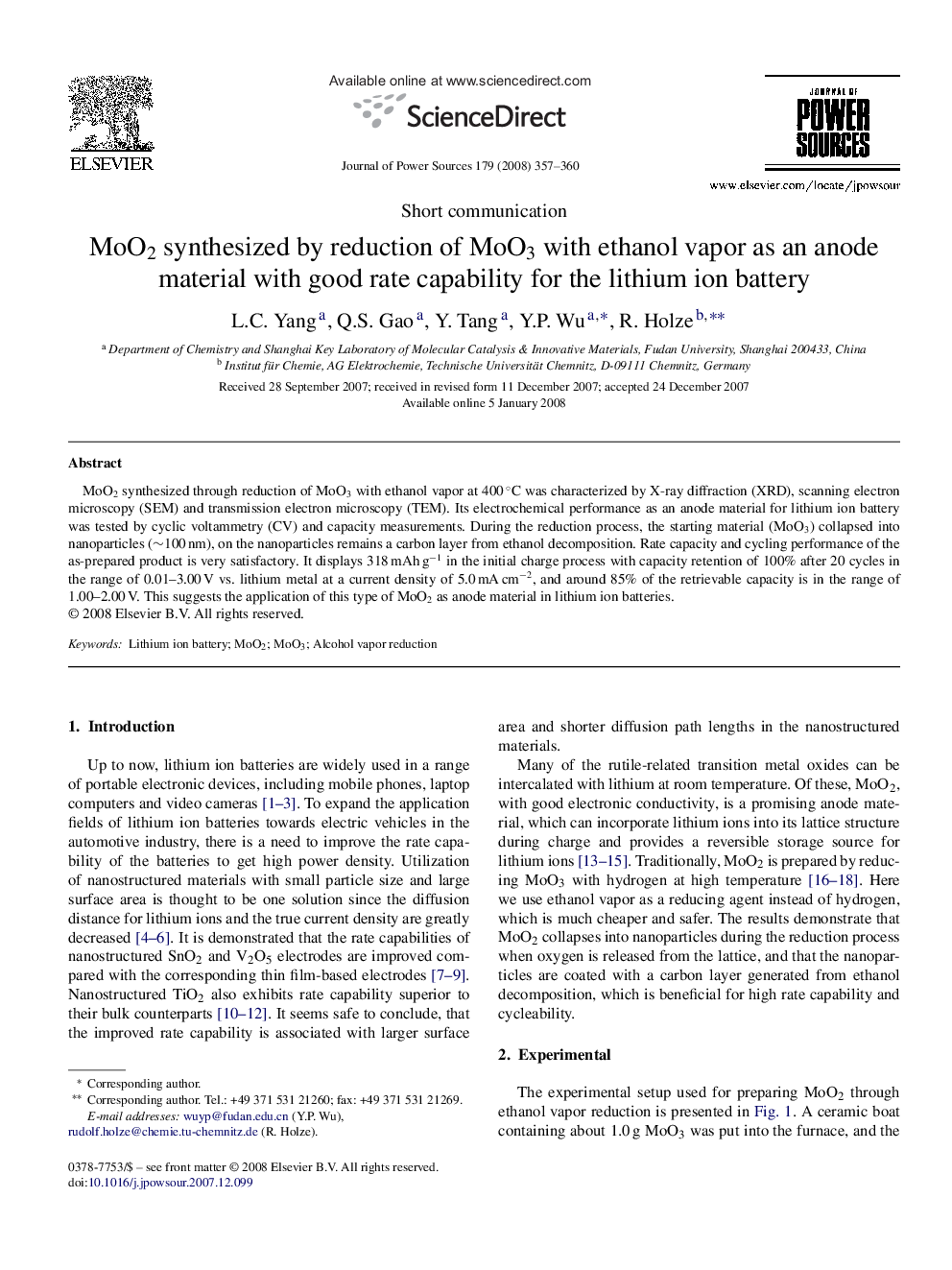| Article ID | Journal | Published Year | Pages | File Type |
|---|---|---|---|---|
| 1291444 | Journal of Power Sources | 2008 | 4 Pages |
MoO2 synthesized through reduction of MoO3 with ethanol vapor at 400 °C was characterized by X-ray diffraction (XRD), scanning electron microscopy (SEM) and transmission electron microscopy (TEM). Its electrochemical performance as an anode material for lithium ion battery was tested by cyclic voltammetry (CV) and capacity measurements. During the reduction process, the starting material (MoO3) collapsed into nanoparticles (∼100 nm), on the nanoparticles remains a carbon layer from ethanol decomposition. Rate capacity and cycling performance of the as-prepared product is very satisfactory. It displays 318 mAh g−1 in the initial charge process with capacity retention of 100% after 20 cycles in the range of 0.01–3.00 V vs. lithium metal at a current density of 5.0 mA cm−2, and around 85% of the retrievable capacity is in the range of 1.00–2.00 V. This suggests the application of this type of MoO2 as anode material in lithium ion batteries.
